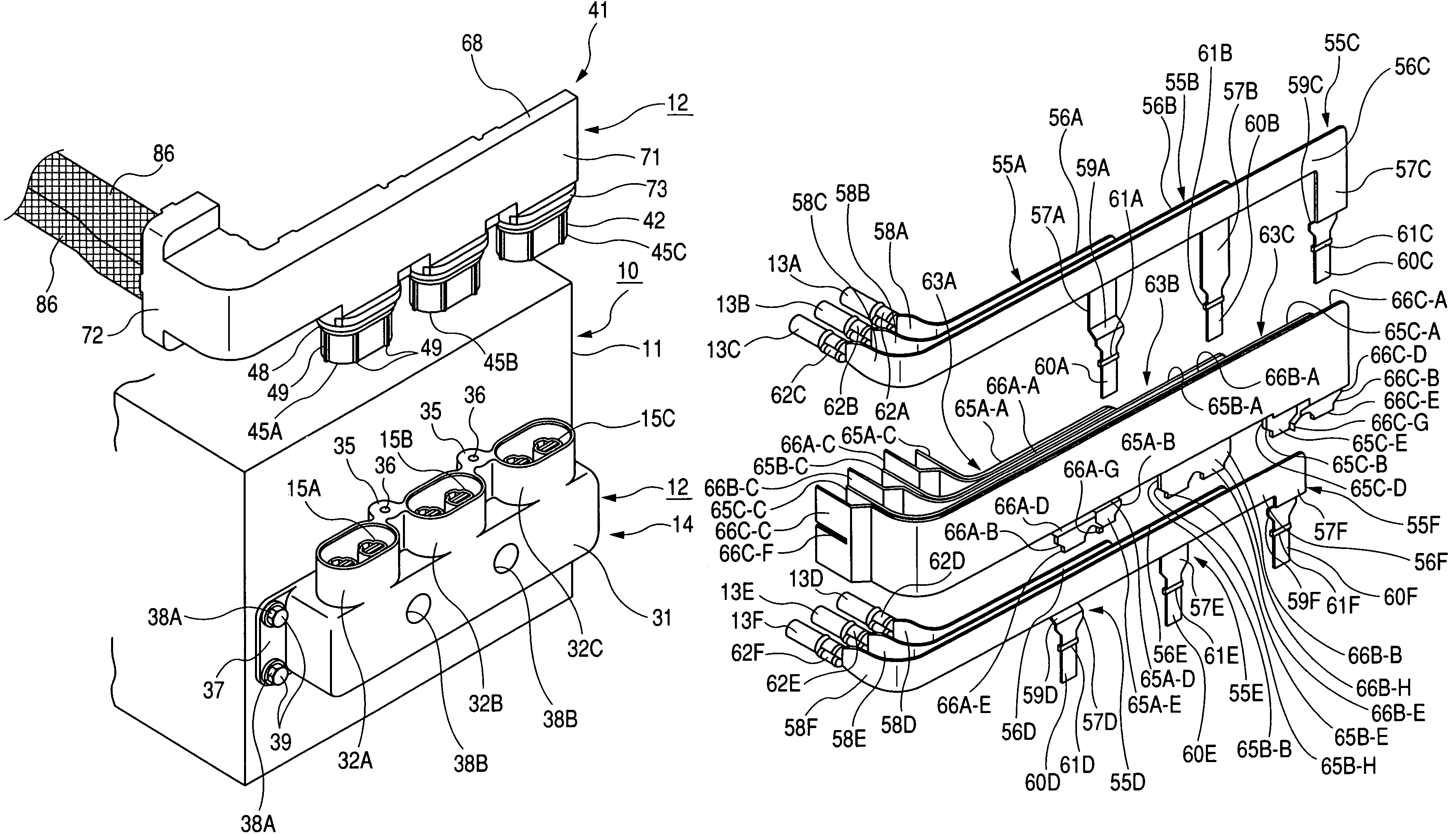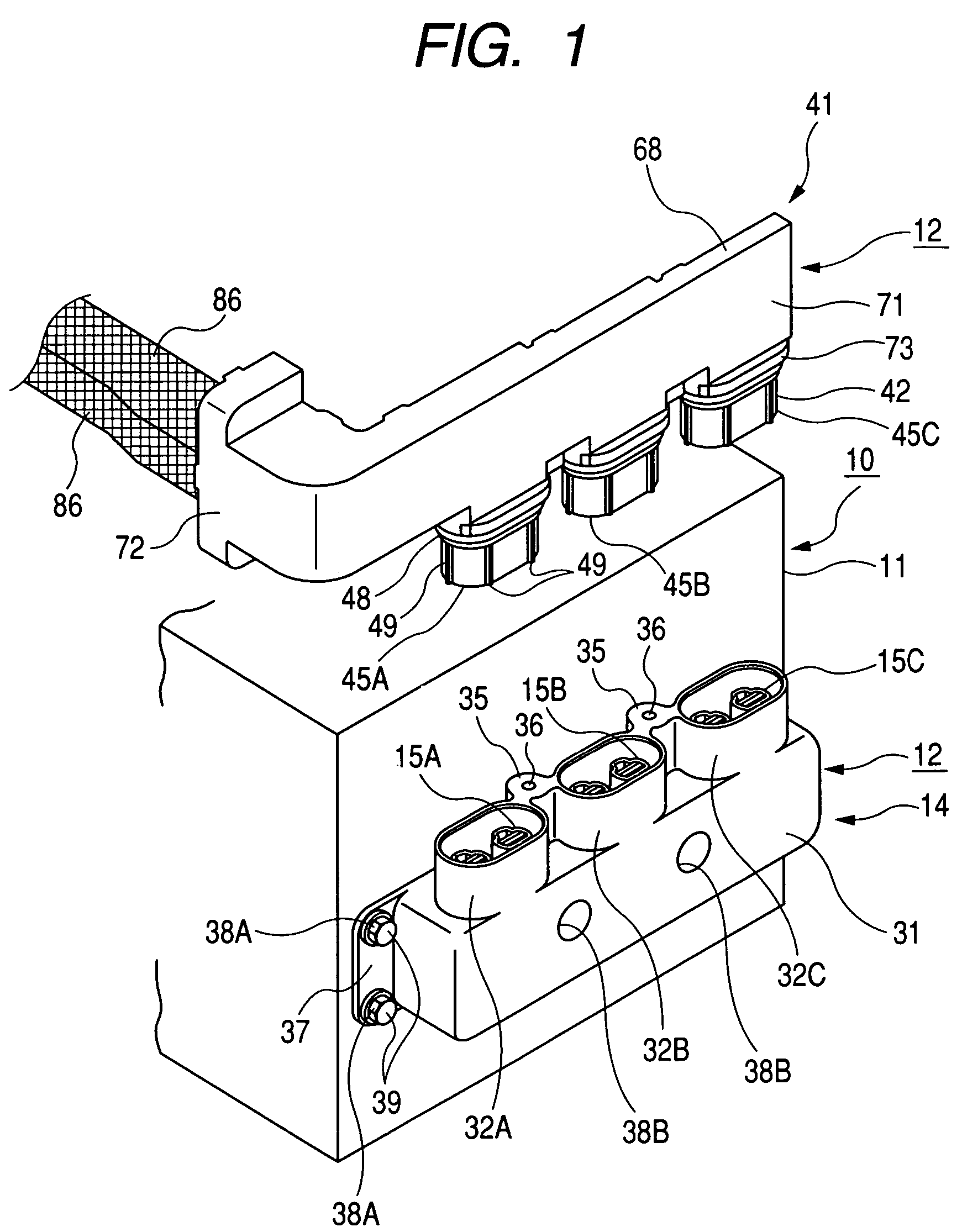Connector for inverter
a technology for connecting wires and inverters, which is applied in the direction of threaded fasteners, dc-ac conversion without reversal, coupling device connections, etc., can solve the problems of large space required for wire distribution, inevitably bulky wire proportions toward each motor, etc., and achieve the effect of increasing the width or bulk of the inverter connectors
- Summary
- Abstract
- Description
- Claims
- Application Information
AI Technical Summary
Benefits of technology
Problems solved by technology
Method used
Image
Examples
first embodiment
[0037]A first embodiment of the present invention will be described according to FIG. 1 to FIG. 10. Hereinafter, the right-hand side of FIG. 1 will be defined as a front or forward side, and the left-hand side thereof as a rear or backward side.
[0038][Inverter 10]
[0039]First, an inverter 10, to which an inverter connector 12 according to this embodiment is to be attached, will be described. The inverter 10 is constituted of an inverter main circuit (not shown) stored in a casing 11. The casing 11 is provided with a through hole (not shown) on a front face thereof for communication between inside and outside of the same. The casing 11 contains therein first to sixth output terminals arranged, a total of six output terminals (not shown), which are directly connected to the inverter main circuit (not shown) and aligned in a row in pairs respectively corresponding to U, V and W phases. The first and the second output terminals are output terminals of the U-phase; the third and the fourt...
second embodiment
[0123]A second embodiment of the present invention will be described according to FIG. 11 to FIG. 18. Hereinafter, the right-hand side of FIG. 11 will be defined as a front or forward side, and the left-hand side thereof as a rear or backward side.
[0124][Inverter 100]
[0125]First, an inverter 100, to which an inverter connector 104 according to this embodiment is to be attached, will be described. The inverter 100 is constituted of an inverter main circuit (not shown) stored in a casing 101. The casing 101 is provided with a through hole 103 on a front face thereof for communication between inside and outside of the same. The casing 101 contains therein a first to a sixth, a total of six output terminals (not shown), which are directly connected to the inverter main circuit (not shown) and aligned in a row in pairs respectively corresponding to U, V and W phases. The first and the second output terminals are terminals of the U-phase; the third and the fourth ones are of the V-phase; ...
PUM
| Property | Measurement | Unit |
|---|---|---|
| conductive | aaaaa | aaaaa |
| insulating | aaaaa | aaaaa |
| radius | aaaaa | aaaaa |
Abstract
Description
Claims
Application Information
 Login to View More
Login to View More - R&D
- Intellectual Property
- Life Sciences
- Materials
- Tech Scout
- Unparalleled Data Quality
- Higher Quality Content
- 60% Fewer Hallucinations
Browse by: Latest US Patents, China's latest patents, Technical Efficacy Thesaurus, Application Domain, Technology Topic, Popular Technical Reports.
© 2025 PatSnap. All rights reserved.Legal|Privacy policy|Modern Slavery Act Transparency Statement|Sitemap|About US| Contact US: help@patsnap.com



